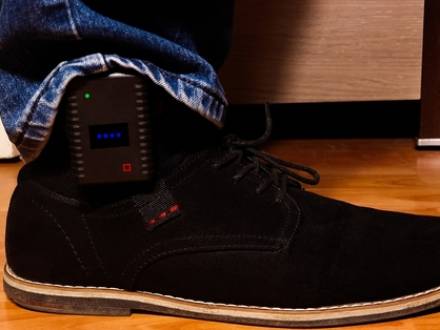Could You Face Felony Charges for Tampering with an Ankle Monitor?
 A law passed in Texas in 2023 has significantly reduced the number of ankle monitor violations by changing the offense from an administrative violation to a criminal act. After SB 1004 was passed last September, the number of ankle monitor violations dropped by almost 50 percent.
A law passed in Texas in 2023 has significantly reduced the number of ankle monitor violations by changing the offense from an administrative violation to a criminal act. After SB 1004 was passed last September, the number of ankle monitor violations dropped by almost 50 percent.
Violation of this new law requires a vigorous criminal defense to avoid further jail or prison time. Speaking to a highly experienced lawyer who can launch a strong legal defense against these—or any other—criminal charges is an essential first step.
When Are Court-Ordered Ankle Monitors Used in Texas?
Ankle monitors are electronic devices used by courts to monitor offenders and ensure they do not travel outside a specified boundary. There are three types of ankle monitoring devices:
-
Radiofrequency monitors are commonly used for juvenile or low-level offenders. They include an ankle monitor and a home monitoring unit with a range of 50 to 150 feet.
-
GPS monitors are the most common type of ankle monitor, tracking the wearer via satellite-transmitted GPS information. Exclusion and inclusion zones can be programmed into a GPS ankle monitor, allowing a person to travel back and forth to work or other approved locations.
-
Alcohol/sweat ankle monitors (SCRAM) also use GPS technology as well as a person’s sweat to detect consumption of alcohol. These are new devices used for those accused of a DWI criminal offense. Those charged with DWI could be ordered to wear an alcohol GPS monitor to prevent them from drinking alcohol as a condition of bond or probation.
A person released on parole or probation might be required to wear an ankle monitor that restricts them to their home, work, parole or probation meetings, and doctor visits. Generally speaking, anyone the court considers a flight risk, someone with prior DWIs, or those charged with a sex offense or drug crime are the most likely to have a court-ordered ankle monitor.
Prior to the new law, tampering with an ankle monitor would trigger the offender’s arrest. A judge would then determine what consequences were appropriate, including revoked bond or parole, jail time, or stricter terms. If the offender who tampered with his or her ankle monitor was a parolee, they could be re-incarcerated.
How Does SB 1004 Change Penalties for Ankle Monitor Tampering?
SB 1004 made ankle monitor tampering a state jail felony for some and even a third-degree felony for others. Of the 39 people convicted for tampering with their ankle monitors since the new law went into effect, penalties have ranged from 30 days in county jail to 25 years at the Texas Department of Criminal Justice. A concern is that a technical issue with an ankle monitor could potentially lead to criminal charges under this new law.
Possible Defenses for Interfering with a Court-Ordered Ankle Monitor
The specific circumstances will determine the defense for ankle monitor tampering. The most common defense is "technological glitches." Like any type of technology, ankle monitors have their share of malfunctions for no apparent reason.
An attorney may argue a problem with the device itself caused it to stop working or misidentify the correct location. If the ankle monitor has been damaged, the argument could be that the damage was either medically necessary or accidental. For example, a medical professional could remove the ankle monitor when the individual’s physician orders an MRI.
Contact a Tarrant County, TX Criminal Defense Lawyer
If you are facing charges for tampering with your ankle monitor, it can be extremely beneficial to speak to a Fort Worth, TX criminal defense attorney. When you choose The Dameron Law Firm, you can feel confident in the fact that you have a knowledgeable, aggressive legal advocate on your side. Crafting a solid defense, and then implementing the necessary legal strategies for the best outcome are hallmarks of The Dameron Law Firm. To schedule your free consultation, call 817-222-0624 to speak with a skilled attorney who brings more than 20 years of experience to the table.

 817-222-0624
817-222-0624







